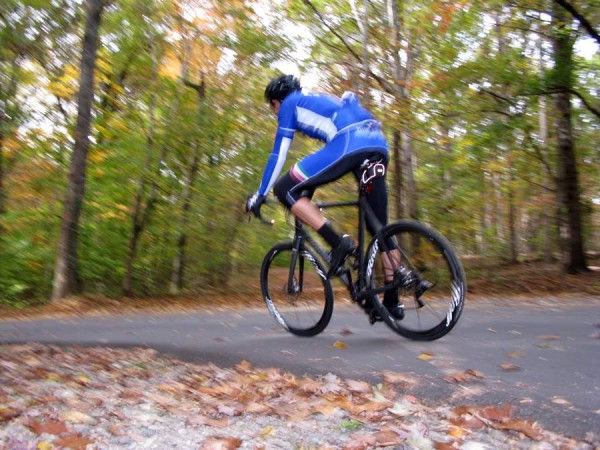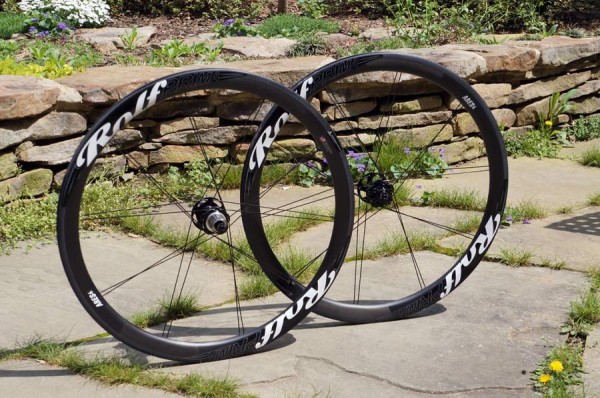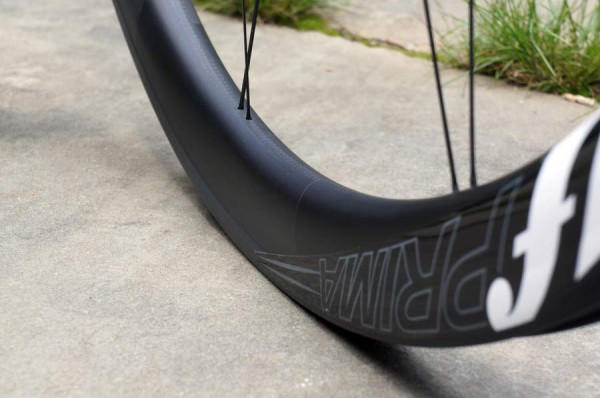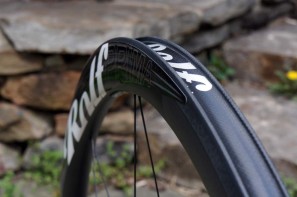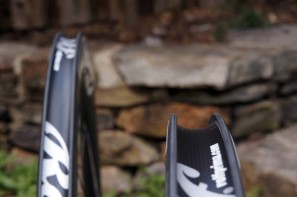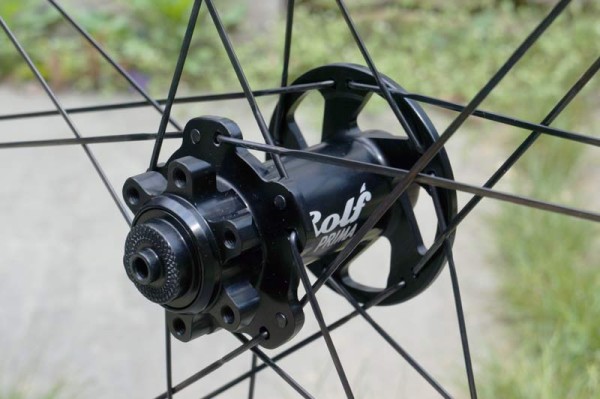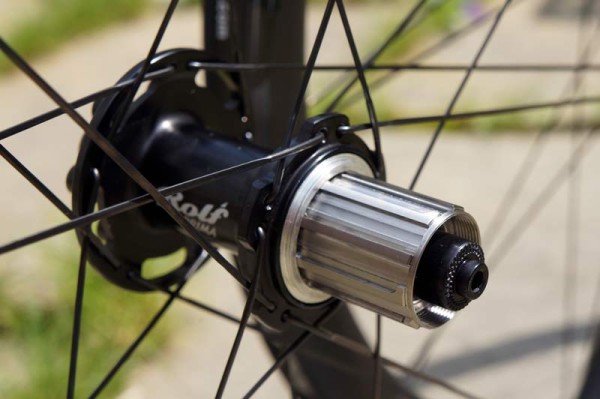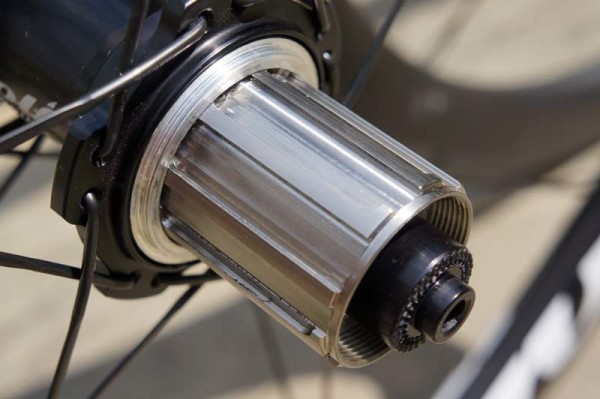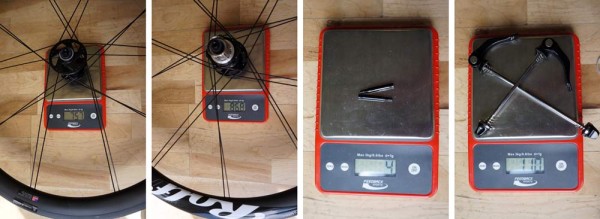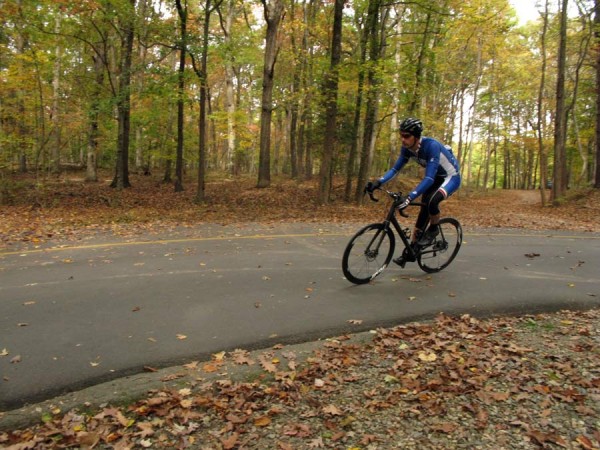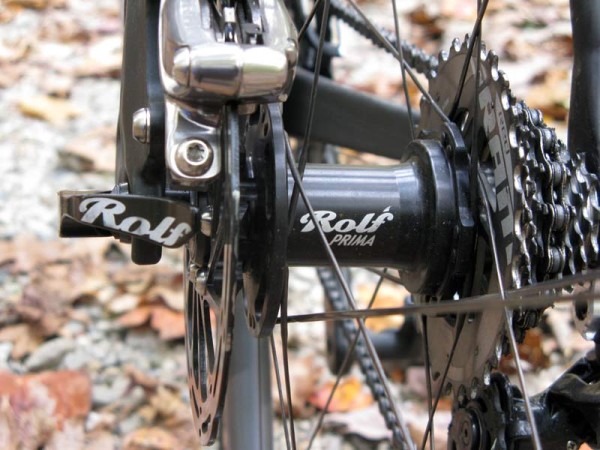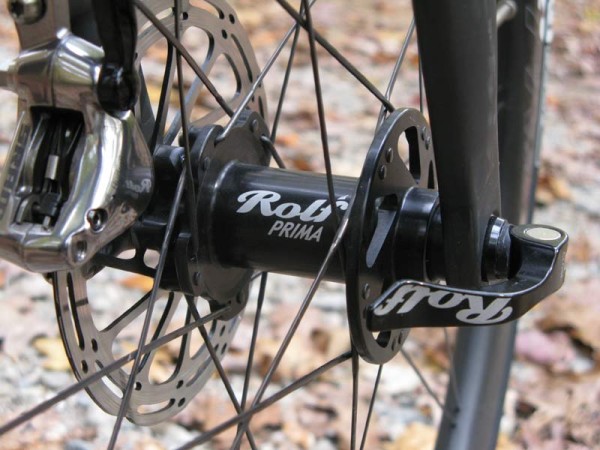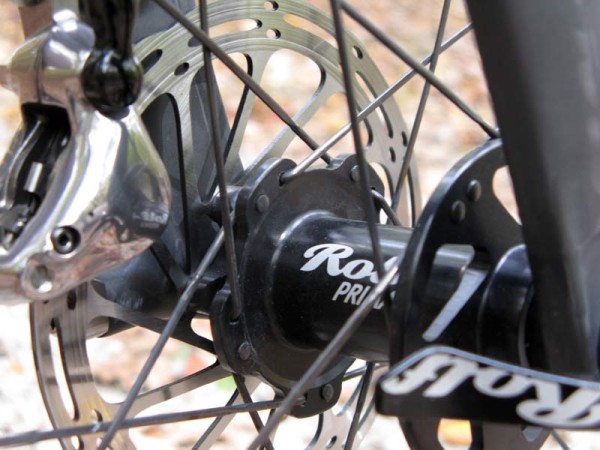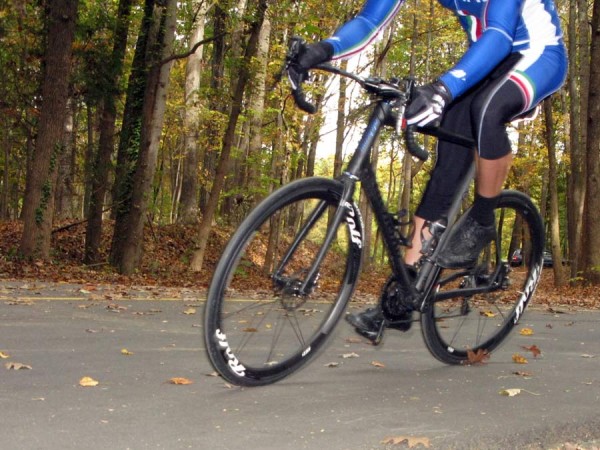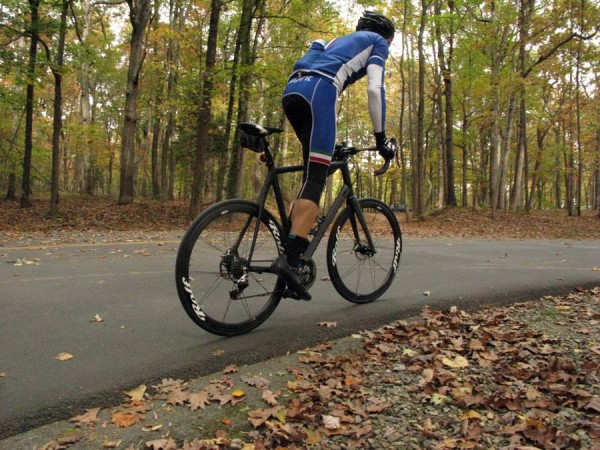After beating the snot out of their Ralos CXC carbon 29er wheels last summer and riding away very impressed with their durability, I was curious if that same quality transferred to their road wheels. Over the summer and through the fall, I’ve been testing the mid-height Rolf Prima Ares4 disc brake road wheels aboard my Alchemy, and, sure enough, they met all expectactions.
Designed to be light, fast and generally capable of anything, the Ares 4 comes in at 42mm deep with a slightly bulged aero shaped rim. It’s available for rim brakes, too, but it’s the disc brake version that was tested. They say it’s perfectly fine for cyclocross, however my testing was on pavement and gravel/dirt roads only, on which it excelled…
DETAILS & ACTUAL WEIGHTS
The basics are: carbon fiber clincher rim laced with 20 spokes per wheel in their paired spoke pattern.
Rolf doesn’t beat us over the head with aero charts, yaw angles and competitive comparisons, but they do have their own design and it was created through iterative CFD and tested in the wind tunnel to reduce drag at the common speeds and wind angles we experience out in the real world. It’s called Delta, and it’s a wider rim profile that’s shaped to smoothly direct the air over the rim and then tire…and vice versa. It’s designed to have symmetrical leading and trailing edges, which means it looks the same to the wind whether the tire is hitting the wind first (front of wheel) or the rim (back of wheel). The paired, minimal spoke usage further reduces drag.
The top of the rim curves inward slightly with a nice, fat, round top, which presumably helps diffuse impacts when running lighter pressures (cyclocross). Considering how well the Ralos held up to the rocks, my hunch is these would handle casing the occasional curb or log barrier just fine. It is a shame they’re not tubeless ready, though.
Inside, the channel sweeps smoothly upward from the center. There’s no shelf for the tire’s bead, which is partly why they don’t recommend trying to set them up tubeless. Tire installation was easy, though. The rim tape is included and comes preinstalled.
The biggest visual difference from the disc to non-disc wheels is the front hub. The rim brake version has radial lacing and fewer spokes with much smaller flanges. The disc version gets taller flanges to help increase the triangulation since the flanges have to be closer together to accommodate the 6-bolt rotor mounts. They’re laced with CX Ray bladed spokes.
The rear uses a taller non-drive flange to accomplish the same thing and help deliver more torque from the drivetrain out to the tires.
The rear hub uses White Industries’ internals, which includes their titanium freehub body. Not only is it light, but it’s far stronger than the alloy ones so it doesn’t get chewed up by cassettes. Very nice! They’re 11-speed SRAM/Shimano ready, and a Campy version is available, too.
Claimed weight for the wheelset is 1,555g (720g F/835g R). Ours came in at 757g and 868g with the rim tape, which likely explains the difference. The included valve stem extensions are 4g and the steel skewers are 110g.
Widths measured 27mm at the widest point, which sits just below where the brake track normally would be, about 24mm at the very tip top of the rim and just shy of 18mm inside the bead hook.
Retail is $2,449, and you can get them with black decals, too.
RIDE REVIEW
I rode the wheels through warm days and cool days, in a drizzling rain and dry, on flat-as-glass Florida roads and the rolling hills near my home in North Carolina. Through it all, the wheels were smooth, stable and remained true.
It’d be interesting to see Rolf’s crosswind aero data because the wheels were very stable in light to moderate crosswinds (I didn’t get a chance to ride in anything severe). When there was an obvious little gust, the wheels took no notice, and there was only minimal effort required to keep them straight when riding across a consistent breeze. On one ride along A1A in Florida, a typically summer afternoon storm was rolling in off the coast, funneling the wind between buildings and through the beach ramps. As I rode past them, the increased wind was apparent, but wouldn’t blow me of course or require any real additional vigilance. Which was good, because I was racing the storm home.
On the bike, the wheels’ matte carbon matched up nicely with the Alchemy (and likely with any other modern matte, UD carbon frame). These are spaced at 135mm out back, and they can now be ordered with QR, thru axles or some combination thereof…and they can be retrofitted either way in the future. Front conversion kit is just $20, the rear is $70-$75 depending on which way you’re going with it and includes both a new axle and endcaps.
The skewer’s graphics match up nicely with those on the hub shell, which is really only important for photos like these.
The front logo, however, is upside down for disc brake installs. Oh well.
Both hubs roll on Enduro Ceramic Cartridge bearings, and they were very, very smooth. In the stand, I could spin the wheel and just watch them turn and turn, rolling freely with no apparent drag. On the road, it seemed the same, letting me coast along easily. Throughout the eight months I had the wheels, they developed no play or wiggle or abnormal noises.
Cornering was great, whether at speed or goofing off through tightly spaced downtown maneuvering. The rims’ width pushed my 700×25 Michelin Pro4 tires out to about 27mm, creating seatstay clearances that would make EU safety commissioners shudder (there was maybe 2mm between the tire and frame. Maybe.) Yet, even when diving into a high speed corner intentionally harder than necessary or really trying to mash the cranks during a sprint, I never heard or felt them rub the frame.
The rim’s width created a great platform for those wider tires, too, which kept them shaped nice and round with traction to spare.
Considering the difference in claimed weight from the rim brake models to these is 190g and there are minimal difference in the rims, all the extra weight is coming from a few extra spokes and the hubs. Rims are claimed at just 445g each, which is pretty good for a clincher of this depth. The wheels felt appropriately sprightly when standing to climb or sprinting, and I never felt like I was paying any penalty for the extra 10-20mm of rim depth when seating and spinning on the inclines.
In a straight line, the wheels quietly sliced through the air. Honestly, most rounded, wide aero rims these days will accomplish what most riders need in terms of drag reduction, and I highly recommend trying out a set of aero wheels. Where the Ares 4 shine is, indeed, in their ability to do it all. The rim provides good aerodynamics at a height and weight that’s appropriate for any type of riding, the hubs roll smoothly and the entire package has remained stiff, straight and smooth the entire time I had them.
